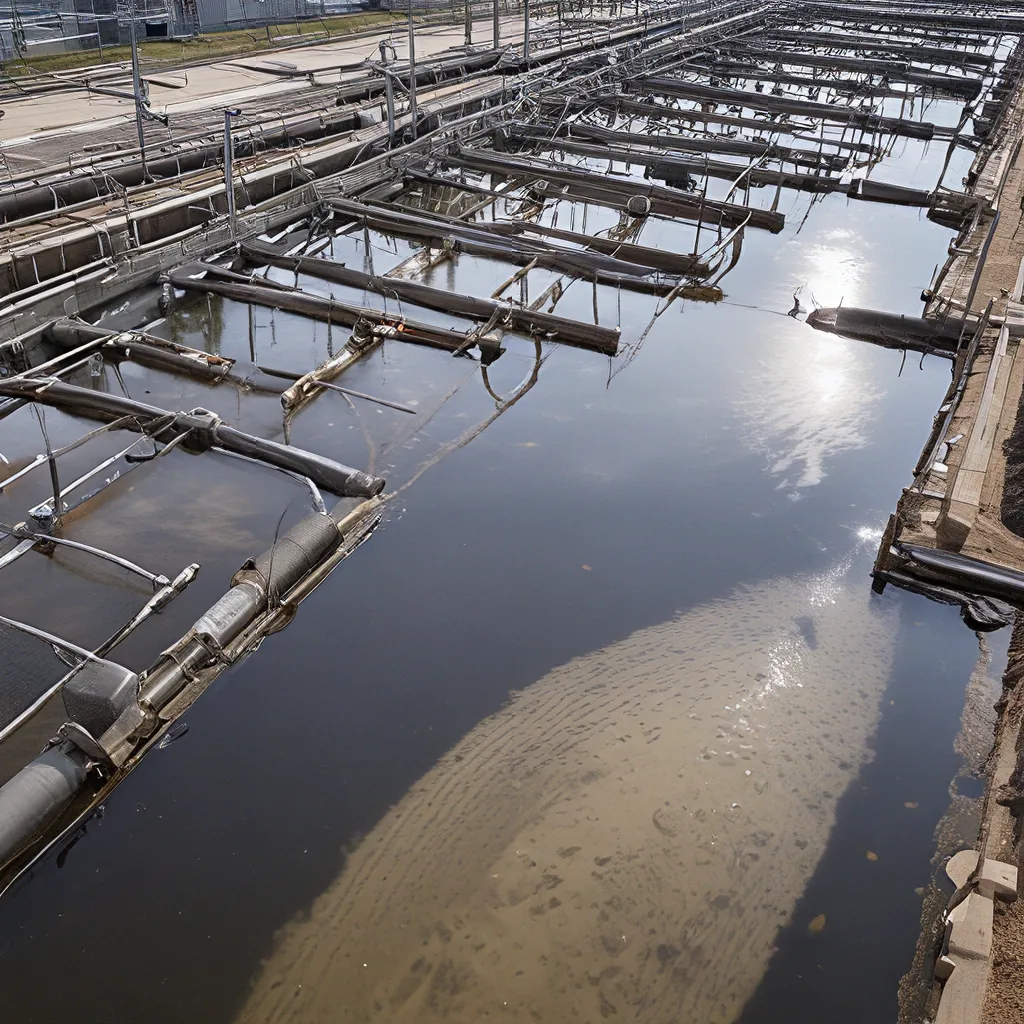
As I dive deeper into the fascinating world of wastewater treatment, I can’t help but be struck by the ever-evolving challenges we face. One of the most pressing issues on the horizon? Emerging contaminants. These sneaky little compounds are making their way into our water systems, and we need to get a handle on them – and fast.
The Rise of Emerging Contaminants
You know, it’s kind of mind-boggling when you think about it. For decades, we’ve been focused on tackling the “usual suspects” – things like bacteria, heavy metals, and the like. But now, a whole new class of contaminants is rearing its head, and they’re not your average pollutants.
These emerging contaminants are a diverse group of chemicals and compounds that have only recently been detected in water sources. We’re talking about everything from pharmaceuticals and personal care products to per- and polyfluoroalkyl substances (PFAS) – the infamous “forever chemicals.” And the kicker? They’re incredibly difficult to remove using traditional wastewater treatment methods.
According to the EPA, exposure to PFAS has been linked to all sorts of nasty health effects, including deadly cancers, liver and heart issues, and developmental problems in infants and children. And the scary part? These chemicals are ubiquitous – they’re practically everywhere, and they’re not going away anytime soon.
Tackling the Challenge
So, how do we even begin to tackle this emerging contaminant crisis? Well, my friends, it’s going to take a multi-pronged approach. First and foremost, we need to get serious about advanced treatment technologies.
According to Assist. Prof. Mahmut Selim Ersan from Arizona State University, traditional disinfection methods like chlorination can actually create their own set of problems – leading to the formation of disinfection by-products that are, you guessed it, emerging contaminants themselves.
But there’s hope! Ersan suggests that innovative technologies like granular activated carbon, reverse osmosis, and ion exchange systems can be effective in removing these pesky compounds. And the good news is, these solutions are becoming more and more accessible for water utilities.
Collaboration is Key
Of course, it’s not just about the technology. We also need to foster a culture of collaboration and information-sharing to tackle this issue. According to a report from Ecologic Institute, water utilities, regulators, and researchers need to work together to identify and monitor emerging contaminants, as well as develop targeted treatment strategies.
And you know, I think this is where companies like Alpha Wastewater can really shine. By staying on the cutting edge of emerging contaminant research and technology, they can help utilities navigate this complex landscape and implement the most effective solutions.
A Race Against Time
At the end of the day, the clock is ticking on this emerging contaminant crisis. The EPA has already taken significant steps, like establishing the first-ever national drinking water standard for PFAS. But there’s still a lot of work to be done.
We need to continue pushing the boundaries of scientific understanding, developing innovative treatment methods, and fostering cross-sector collaboration. And we need to do it quickly, before these emerging contaminants wreak even more havoc on our water systems and the health of our communities.
It’s a daunting challenge, I know. But I’m optimistic that with the right mindset, resources, and determination, we can tackle this emerging contaminant crisis head-on. After all, the health and wellbeing of our communities – and our planet – depend on it.
So, who’s ready to dive in and get their hands dirty? The future of our water systems is counting on us.